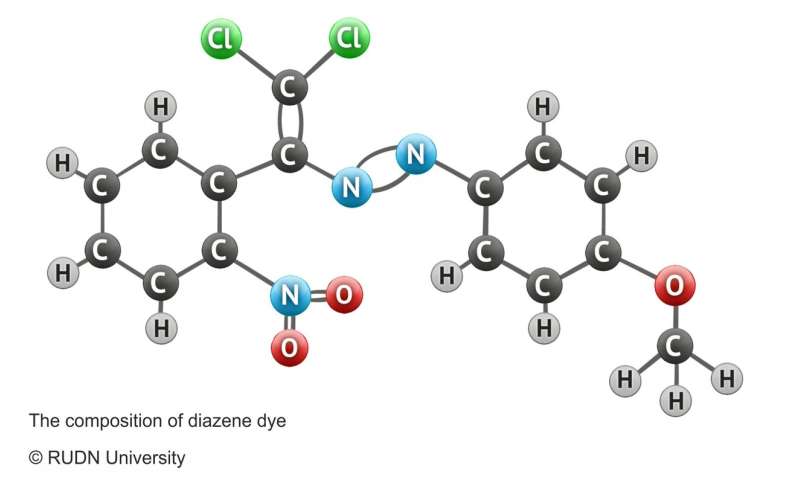Chemists Created a Precise Model of Chemical Bonds in Diazone Dyes

Chemists from RUDN carried out detailed analysis of the nature of intermolecular bonds between nitrogen and chlorine in the molecules of azo dyes and defined their photochromic properties. The scientists also clarified the importance of hydrogen and halogen intermolecular bonds in the stabilization of dyes structure. The research can be useful for all the types of azo dyes applications. The article was published in the Dyes and Pigmentsjournal.
A team of researchers from RUDN analyzed the structure of a azo dye—a substances, which photochromic base is the nitrogen atoms—and found out the positions and characteristics of its inter- and intramolecular bonds. A peculiar feature of that type of azo dyes is the existence of bonds that are similar to intermolecular ones by their structure and properties inside the molecules. These types of bonds are formed between molecules and despite their low energy levels strongly affect the spatial shape of big molecules (such as DNA).
The chemists analyzed the bonds between two atoms of nitrogen and one atom of chlorine within the molecule of the dye. The study showed that the nitrogen-chlorine bond was flexible, and its position depended on the structure of substituents (parts of the molecules attached to its nucleus) connected with nitrogen atoms. The scientists also found out that hydrogen bonds together with inter-orbital interactive processes firmly fixed the positions of dye molecules in the crystal structure.
During the first stage of the work the chemists received 6 samples of dyes with different structures. Nitrobenzaldehyde was used as the initial substance for synthesis. Each sample of nitrobenzaldehyde was treated with different reagents to create different dyes. On the second stage the scientists analyzed the structure of inter- and intramolecular bonds. To do so, they used physical and chemical analysis methods: NMR spectrometry, mass spectrometry, UV spectrometry, and X-ray crystallography. The first two methods helped the scientists determine the characteristics of hydrogen bonds between the molecules of different compounds classified as azo dyes. Using UV spectrometry, RUDN chemists studies changes in the structures of these compounds in various solvents and found out that is changed depending on the polarity of the environment.
"We demonstrated prominent role of intra- and intermolecular non-covalent interactions in the course of new azo dyes development. The obtained results may be useful for creating promising dyes, catalysts, and functional materials with essential physical and chemical properties," says Fedor Zubkov, a co-author of the work, a candidate of chemical sciences, and assistant professor at the department of organic chemistry, RUDN.
Using the results of this study, the scientists will be able to develop compounds with given properties: for example, by changing the position and structure of substitutes one can alter the colour of the dye and the nature of its reaction with the base and the solvents. The study of inter- and intramolecular bonds in dyes is important for developing medicinal drugs and their target delivery, as well as for controlling supra-molecular assembly processes and acceleration of chemical reactions.
Provided by RUDN University